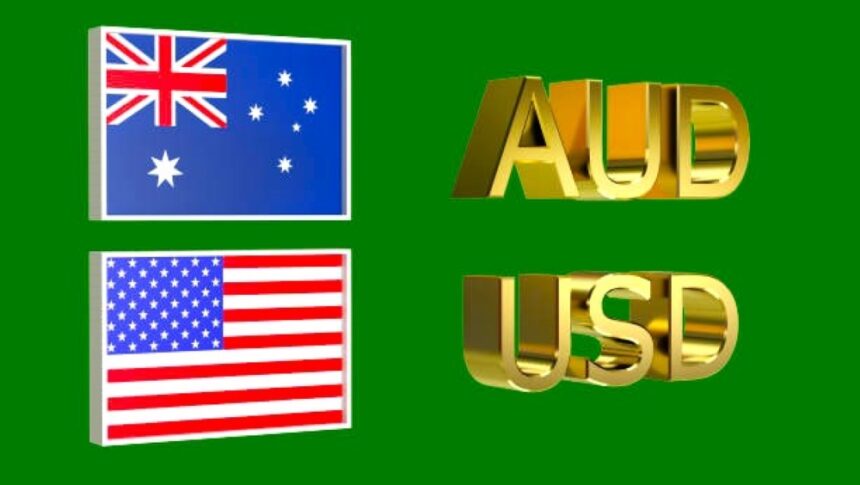Australian dollar is rising after Prime Minister Albanese revealed details of a trade talks with Trump last week.
On Wednesday, following a radio interview with Australia’s Prime Minister Anthony Albanese, the Australian Dollar (AUD) strives to end its losing streak against the US Dollar (USD). Albanese revealed that he discussed trade with US President-elect Donald Trump during a phone chat last week. Albanese informed Trump that the US had a trade surplus with Australia, emphasizing that it is in It is in Washington’s best advantage to “trade fairly” with its allies. Meanwhile, the defense minister emphasized Australia’s strong investment in security.
Australia’s Wage Price Index grew at 3.5% year on year in Q3, down from 4.1% in Q2.
The AUDUSD pair remained subdued following the release of Australia’s Wage Price Index data, which was weaker than expected on Wednesday. Furthermore, the pair’s downward movement supported by confidence surrounding Trump trades.
Following last week’s interest rate hold, Reserve Bank of Australia (RBA) Governor Michele Bullock confirmed a hawkish approach, underlining the necessity for tight monetary policy in the face of continued inflation threats and a healthy labor market. The hawkish sentiment surrounding the RBA may have limit the Australian dollar’s downside.
The US Consumer Price Index data release will be watch during the North American session.
The US dollar rose as analysts underlined that if Trump’s economic ideas are implemented, they might stimulate investment, spending, and labor Demand may rise, increasing the risk of inflation. This scenario may prompt the Federal Reserve (Fed) to consider a more restrictive monetary policy stance.
Traders are now looking forward to the release of US inflation data on Wednesday, which will provide additional insight on future US policies. The headline Consumer Price Index (CPI) forecast to grow 2.6% year on year in October, while the core CPI expected to rise 3.3%.
Daily Market update:Australian dollar is under pressure from Trump’s plan tariff on Chinese goods.
Australia’s Wage Price Index increased by 3.5% year on year in the third quarter, down from 4.1% the previous quarter and falling short of estimates of a 3.6% increase. This represents the smallest wage growth since Q4 2022.
Minneapolis Fed President Neel Kashkari announced on Tuesday that the The central bank remains optimistic in its long-term fight against transitory inflation, but it is too early to declare success. Kashkari also stated that the Fed would delay calculating the economic impact of Trump’s ideas until more specifics were known.
In November, Australia’s Westpac Consumer Confidence index rose by 5.3% to 94.6 points, the second consecutive month of growth and the highest level in two and a half years. However, the measure has been below 100 for nearly three years, indicating that pessimists outnumber optimists.
Matthew Hassan, Senior Economist at Westpac, stated, “Consumers are experiencing less pressure on their family finances, are no longer apprehensive about additional interest rate rises, and are increasingly confident in the economic outlook.”
Bloomberg News reported early Tuesday that Chinese regulators intend to reduce home-purchase taxes. According to the source, authorities are developing a proposal that would allow big cities to reduce the deed tax for buyers to as little as 1%, down from the existing maximum rate of 3%.
China’s newest stimulus measures fell short of investor forecasts, lowering demand predictions for Australia’s main trading partner and dragging on the Australian dollar.
China’s newest stimulus measures fell short of investor forecasts, lowering demand predictions for Australia’s main trading partner and dragging on the Australian dollar. On Friday, China proposed a 10-trillion-yuan loan plan aimed at alleviating local government finance difficulties and supporting lagging economic growth. However, the package did not include immediate economic stimulus measures.
Morgan Stanley classifies the Trump administration’s macroeconomic policy into three major categories: tariffs, immigration, and Fiscal measures. The research anticipates that tariff measures will be prioritize, with an immediate application of 10% tariffs globally and 60% tariffs on China.
On Thursday, Federal Reserve Chair Jerome Powell remarked that he does not see Trump’s likely return to the White House having an impact on the Fed’s near-term policy decisions. “We don’t guess, speculate, or make assumptions about future government policy choices,” Powell said after the bank opted to cut interest rates by 25 basis points to 4.50%-4.75%, as expected.









